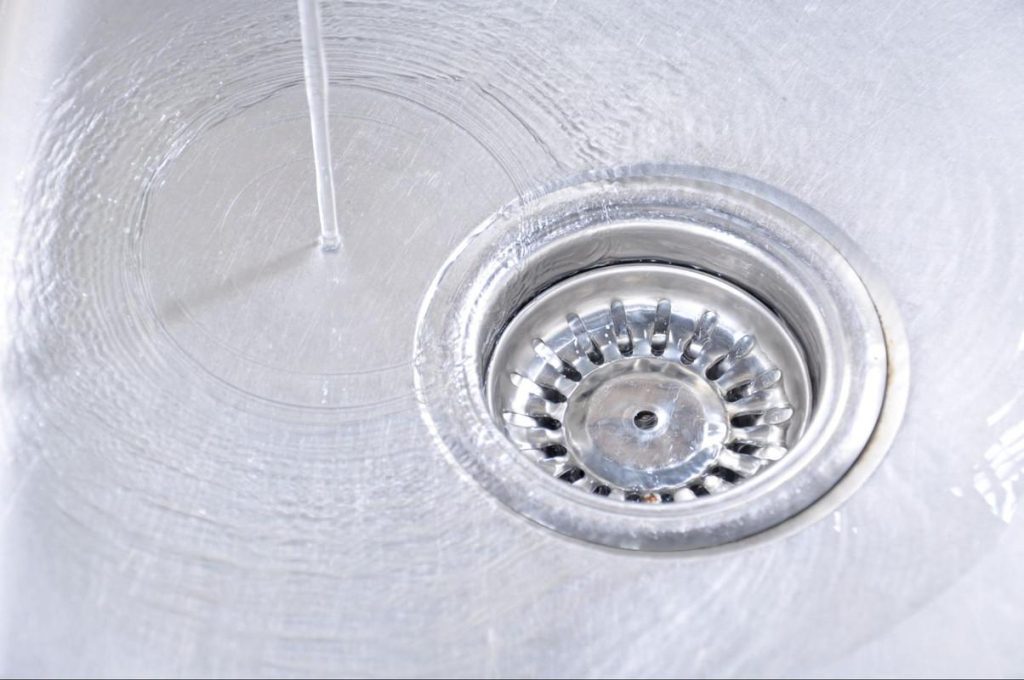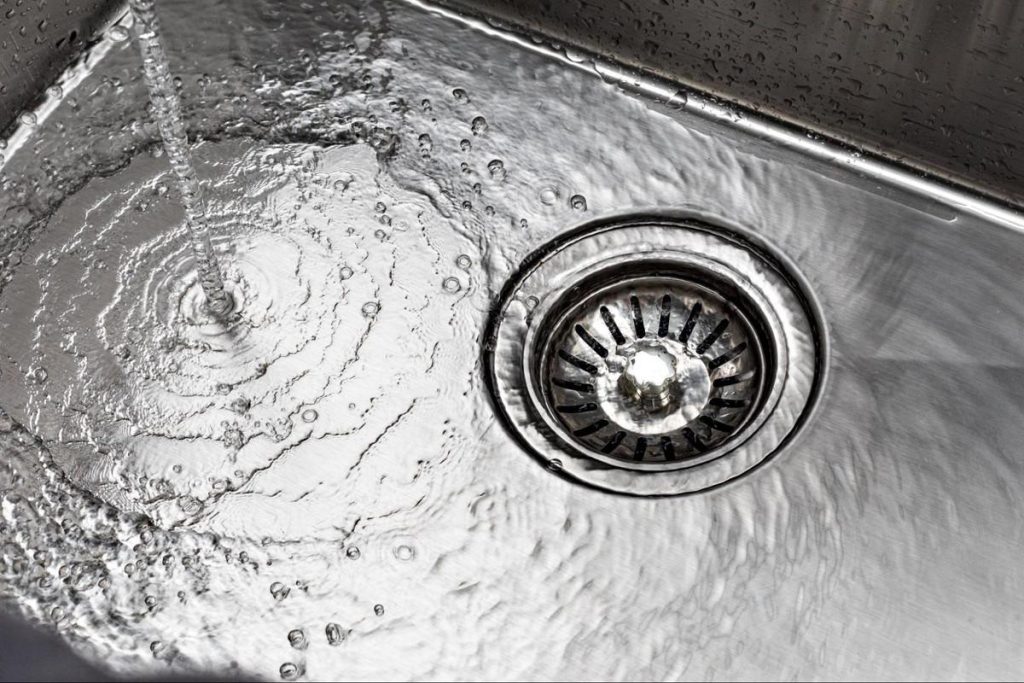A slow-draining sink might seem like nothing more than a minor annoyance – a small delay in your daily routine that’s easy to ignore. Many homeowners dealing with blocked drains in Crawley and surrounding areas simply assume it’s the result of everyday use and hope it will resolve itself over time. But in reality, slow drainage is often the first warning sign of deeper plumbing or drainage issues developing out of sight.
What starts as a sluggish trickle could be the early stage of a blockage, pipe corrosion, or even structural damage to your drainage system. Left unchecked, these problems tend to escalate, leading to leaks, unpleasant odours, or costly water damage. Addressing the issue early through regular maintenance and professional inspection not only saves you money but also prevents small inconveniences from turning into major repairs.
If you notice your sink draining slowly or suspect a developing blockage, DrainBoss Plumbing & Drainage can help. As a trusted, family-run company serving Sussex, Surrey, Kent, Hampshire, and South London, DrainBoss provides reliable, fixed-fee solutions with no call-out charges. Their experienced engineers use advanced CCTV surveys and high-pressure jetting to diagnose and clear drainage problems quickly – keeping your home safe, clean, and free-flowing.

Common Causes of a Slow-Draining Sink
Slow drainage rarely happens overnight. In most cases, it’s the result of gradual buildup inside the pipes – layers of everyday waste that narrow the passageway for water to flow. The exact cause often depends on where the problem occurs.
In kitchens, grease and soap scum are the most common culprits. When warm fats or oils are poured down the sink, they cool and solidify, sticking to the pipe walls. Over time, this residue traps food particles and creates a dense, sticky blockage that water struggles to pass through.
In bathrooms, the issue is usually hair and residue. Strands of hair combine with soap and toothpaste to form a fibrous mass that clings to the inside of pipes, gradually slowing drainage.
Food particles and debris also play a major role, especially when sink strainers or filters are missing. Even small bits of rice, coffee grounds, or vegetable peelings can accumulate in the bends of the pipework and restrict flow.
In areas with hard water, mineral buildup adds another layer of trouble. Calcium and limescale deposits form on pipe interiors, creating rough surfaces that catch more debris and accelerate clog formation.
While most slow-draining sinks are caused by surface-level blockages, sometimes the root of the problem lies deeper – in the trap (U-bend) or even the main drain line. In those cases, what looks like a small inconvenience can signal a larger issue within the household drainage system.
Hidden Consequences of Ignoring a Slow Drain
It’s tempting to overlook a slow-draining sink, especially if the water still eventually clears. However, what seems like a harmless delay can quietly cause a chain reaction of plumbing and hygiene problems beneath the surface.
When water struggles to pass through partially blocked pipes, it creates pressure build-up within the system. This constant strain can lead to tiny cracks and leaks, especially around joints and seals. Over time, these microfractures may allow water to seep into walls, floors, or cabinetry – often going unnoticed until visible damage appears.
The situation worsens when stagnant water is left to sit inside the pipes. Continuous exposure to moisture encourages corrosion, particularly in metal plumbing, weakening the material and shortening its lifespan.
Meanwhile, slow-moving or trapped water becomes a breeding ground for mould and bacteria, especially under sinks and behind cupboards where humidity levels are high. The resulting growth not only produces unpleasant odours but can also pose health risks for those with allergies or respiratory issues.
Organic residue caught in the pipes also attracts pests such as drain flies and other insects that thrive in damp environments. These nuisances often appear as a secondary symptom of neglected drainage.
Even if your sink seems to drain “a bit faster” after some time, the underlying problem rarely disappears on its own. In most cases, it continues to worsen gradually – until a full blockage or leak forces costly repairs.
How Slow Drainage Damages Your Plumbing System
Slow drainage doesn’t just affect how quickly water disappears from your sink – it can also have lasting effects on the entire plumbing network. When water consistently struggles to flow through the pipes, it alters the internal conditions of the system, often in ways that aren’t immediately visible.
Here’s how slow drainage gradually damages your plumbing:
- Internal buildup forms along the pipe walls. Standing or slow-moving water leaves behind soap, grease, and mineral deposits that accumulate over time. These layers reduce the effective diameter of the pipe, making future blockages form faster and more frequently.
- Pressure inside the pipes increases. As water encounters resistance, it creates extra pressure within the system. This constant strain can loosen joints, stress seals, and eventually cause small leaks or bursts – particularly in older pipework.
- Backflow becomes a risk. When water cannot drain efficiently, it may reverse direction, pushing wastewater back into sinks or other outlets. This backflow carries bacteria and unpleasant odours, contaminating clean areas and creating a serious hygiene hazard.
The most concerning aspect of this process is that the damage is often hidden. Corrosion, microleaks, and structural weakening occur behind walls or beneath floors, remaining unnoticed until they escalate into visible water damage or flooding.
By the time these signs appear, the repair costs are typically much higher than what regular inspection or early intervention would have required.
Health Risks of Standing or Slow-Draining Water
A slow-draining sink isn’t just an inconvenience – it can also become a hygiene and health concern if left untreated. Stagnant or slow-moving water provides the perfect breeding ground for bacteria, mould, and even small pests. The longer water and organic residue remain trapped inside the pipes, the higher the risk of contamination and unpleasant side effects in your home.
Below are some of the most common health risks linked to slow or standing water in sinks and drains:
| Health Risk | Cause | Potential Impact |
| Bacterial growth (E. coli, Salmonella) | Standing water and organic debris provide ideal conditions for harmful bacteria to thrive. | Can cause stomach illnesses or infections if surfaces or utensils are contaminated. |
| Mould and mildew | Persistent dampness around and beneath sinks. | Leads to unpleasant odours, discolouration, and can trigger respiratory issues. |
| Allergic reactions and breathing problems | Exposure to mould spores and bacteria in enclosed spaces. | Symptoms may include coughing, sneezing, and aggravated asthma. |
| Drain flies and insects | Organic residue inside drains attracts pests to lay eggs. | Causes infestations and unpleasant smells around sinks and bathrooms. |
Regular cleaning, flushing drains with hot water, and ensuring proper ventilation in kitchen and bathroom areas are essential for preventing these health hazards. Keeping drains clear not only protects your plumbing but also helps maintain a cleaner, healthier living environment.
Why DIY Fixes Can Make Things Worse
When faced with a slow-draining sink, many homeowners instinctively reach for quick DIY solutions. While it’s understandable to want a fast fix, these methods often do more harm than good – turning a small blockage into a much bigger problem.
One of the most common mistakes is the use of aggressive chemical drain cleaners. These products may promise instant results, but their harsh ingredients can corrode metal and plastic pipes alike. Repeated use weakens the pipe structure, leading to leaks or even complete failure over time. The fumes they produce can also be hazardous in poorly ventilated spaces.
Another frequent error involves improvised tools – such as wire hangers, skewers, or other household items – being pushed into the drain to remove the blockage. While this might dislodge some debris, it can easily scratch or puncture the inside of the pipes, creating rough edges that trap even more buildup later on.
Even seemingly harmless techniques like incorrect plunging can worsen the issue. Without proper sealing or pressure control, plunging can push debris deeper into the pipework, compacting the blockage rather than clearing it.
The key problem with DIY fixes is that they address the symptom, not the cause. Without professional inspection or diagnostic tools, it’s impossible to know whether the blockage is local or part of a deeper issue within the drainage system. What appears to be a quick win often hides a developing problem that will resurface – usually at a higher cost.
When a Slow Drain Signals a Deeper Issue
Sometimes, a slow-draining sink is more than just a local blockage – it can be a warning sign of a much larger plumbing issue within your property’s drainage system. Recognising these early indicators can save you from extensive damage and expensive repairs later on.
Here are the most common signs that the problem runs deeper:
- Multiple drains are slow. If sinks, baths, and showers across your home are all draining sluggishly, it suggests a blockage or restriction in the main drainage line rather than in a single fixture.
- Gurgling or bubbling noises. Air trapped in the pipes or struggling to escape can create a distinct gurgling sound, often an indicator of partial blockage or venting issues.
- Water rising in other fixtures. For example, when you drain a sink and water appears in the bath or toilet, it’s a clear sign that the water flow is obstructed further down the system.
- Persistent foul odours. A lingering smell of sewage or decay usually points to stagnant water, decomposing debris, or trapped gas within the drain network.
When these symptoms occur, a professional inspection is essential. Trained drainage engineers can carry out a CCTV drain survey to identify exactly where the problem lies – whether it’s a collapsed section of pipe, root intrusion, or a serious blockage in the main line. With an accurate diagnosis, repairs can be made efficiently and safely, preventing future disruptions and protecting your property from further damage.
Preventive Measures to Keep Sinks Flowing Smoothly
Preventing a slow-draining sink is far easier – and far cheaper – than fixing one. With a few simple habits and a little routine maintenance, you can keep your plumbing system running efficiently and avoid costly emergency repairs.
Here are some practical steps to help maintain smooth drainage throughout your home:
- Avoid pouring grease or coffee grounds down the sink. Grease solidifies as it cools, clinging to the pipe walls and trapping debris. Coffee grounds don’t dissolve in water and can quickly build up to form stubborn blockages. Dispose of these materials in the bin instead.
- Use sink strainers or drain filters. These inexpensive devices catch hair, food particles, and other debris before they enter the pipes, making a huge difference in preventing buildup.
- Flush the drain regularly with hot water and mild detergent. Running hot water through the pipes once a week helps dissolve soap residue and loosen minor deposits. A small amount of washing-up liquid can also help break down grease safely.
- Schedule annual preventive cleaning. Even if your drains seem fine, professional maintenance once a year helps remove hidden buildup and detect early signs of wear or corrosion.
A little prevention goes a long way. Regular care keeps your drainage system clean, efficient, and odour-free – saving you from the expense and stress of unexpected blockages or major plumbing repairs.
When to Call a Professional
While minor blockages can sometimes be cleared with basic maintenance, certain warning signs mean it’s time to call in a qualified drainage specialist. Ignoring these indicators often leads to worsening damage, hidden leaks, or even full system failure.
You should contact a professional plumber or drainage engineer if you notice any of the following:
- Recurring blockages. If the same sink or drain keeps slowing down after temporary fixes, the underlying issue is deeper within the system.
- Persistent slow drainage even after mechanical cleaning. This suggests partial obstructions, pipe corrosion, or internal damage that simple tools can’t reach.
- Unpleasant odours that won’t go away. Lingering smells often point to trapped waste, standing water, or bacteria inside the drain line.
- Leaks or flooding beneath sinks or appliances. Even small leaks can quickly escalate into costly water damage or mould growth if left unchecked.
Modern drainage services use safe, non-invasive technologies to identify and resolve these problems effectively. Techniques such as high-pressure water jetting can clear stubborn debris without harming the pipes, while CCTV drain surveys provide a detailed visual inspection of your drainage system. These methods ensure accurate diagnosis and long-lasting solutions – without unnecessary disruption to your home.

Conclusion: Don’t Wait for a Major Blockage
A slow-draining sink is rarely just an inconvenience – it’s a warning sign that your plumbing system may already be struggling. What begins as a minor slowdown can soon lead to leaks, pipe corrosion, unpleasant odours, or even serious water damage. Acting early not only prevents expensive repairs but also keeps your home safe, hygienic, and efficient.
Regular drain maintenance should be viewed as part of responsible home care – just like servicing your boiler or checking your electrical wiring. Preventive cleaning and inspection ensure that problems are caught before they escalate, saving time, stress, and unnecessary expense.
For homeowners and businesses dealing with blocked drains in Tunbridge Wells and across Sussex, Surrey, Kent, Hampshire, and South London, DrainBoss Plumbing & Drainage provides expert solutions for every type of drainage issue. As a family-run, Trading Standards Approved company with no call-out charges and 24/7 emergency support, DrainBoss combines professional expertise with local reliability. Their fully trained engineers use the latest technology – from high-pressure water jetting to CCTV drain surveys – to identify and fix problems quickly, safely, and efficiently.
